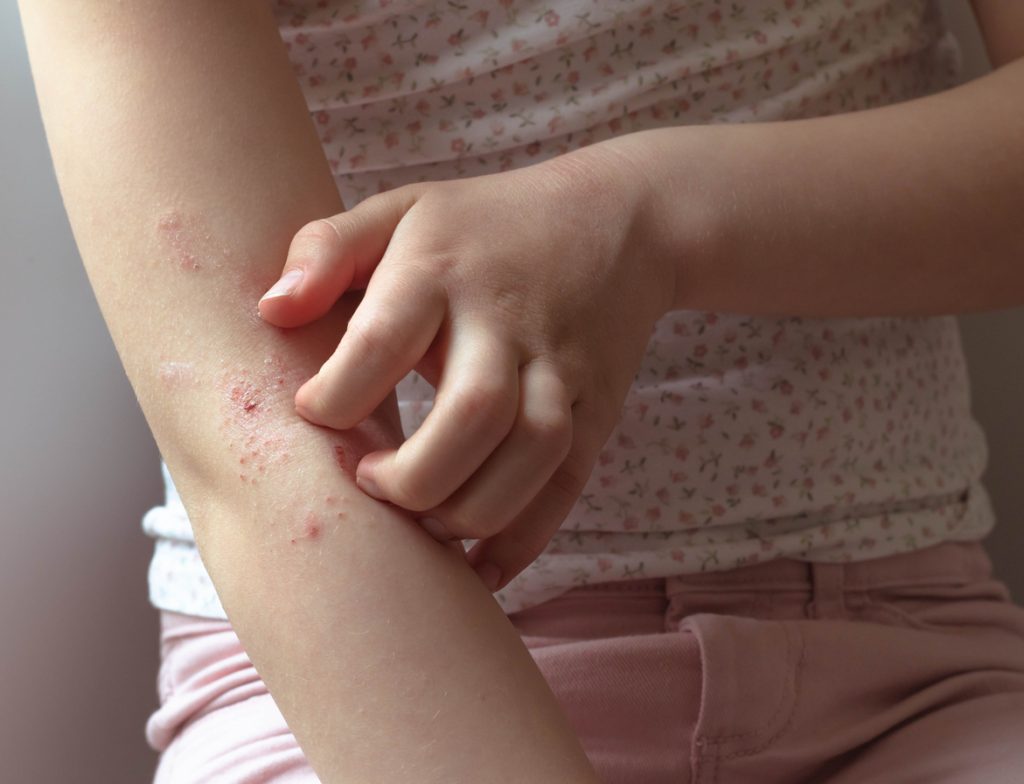A complete skin examination is an important component of an accurate assessment of atopic dermatitis (AD), but it’s not enough.
This is the main takeaway from new research in the Archives of Dermatological Research that underscores the need for a structured approach to better document activity and assess and address true disease burden in AD.
Study Reveals Inconsistencies
“Our study reveals significant inconsistencies in documenting and describing AD, particularly when capturing skin signs, long-term disease progression, and patient-centric assessments, with rare use of objective measures or validated tools. Inconsistent and incomplete description of AD was prevalent across all severity levels of AD, indicating a broader issue in clinical documentation regardless of variation in clinical complexity,” conclude researchers Meredith Tyree Polaskey, a Medical Student at Rosalind Franklin University of Medicine and Science in Chicago, IL, and Raj Chovatiya, MD, PhD, Founder and Director of the Center for Medical Dermatology and Immunology Research in Chicago, IL. “Effective AD management requires documentation that captures clinician-observed signs and patient-reported experiences, addressing the condition’s visible signs and invisible burdens. Our study highlights a concerning gap in current practices.”
For the study, researchers set out to assess the comprehensiveness of AD documentation in clinical practice. They performed a retrospective analysis of electronic health records from a regional health system. A manual review of 2,193 records confirmed 600 AD patients.
Narrative descriptions of lesion morphology and location were documented in 76.2% and 92.7% of notes, respectively, the study showed. Only a minority commented on chronicity (6.2%), signs other than erythema (≤ 25.0%), disease extent (38.2%), or severity. Itch, skin pain, sleep disturbances, and mental health symptoms were reported in 58.7%, 14.5%, 10.2%, and 1.0% of notes, respectively, with numerical rating scales rarely applied. Moreover, patient-assessed global severity was recorded in 6.2% of notes, and Quality of Life impact in 3.8%. Documentation of flare frequency, duration, and post-treatment changes was rare, the researchers report.
“Future research should focus on whether improved documentation leads to enhanced patient outcomes, providing a clearer understanding of the impact of these documentation strategies,” the researchers report.
This Is How I Do It
Leigh Ann Pansch, MSN, FNP-BC, DCNP, the Clinical Director of Education at DOCS Dermatology in Cincinnati, OH, always includes Pruritus Numeric Rating Scale (NRS)-24 hours and Pruritis NRS-7 days, Investigator Global Assessment (IGA), and Body Surface Area (BSA), including body locations and lesional type.
“I like to draw a word picture from the top of the head to the tips of the toes (i.e., large, annular, lichenified papules and plaques involving the eyelids, lateral neck, antecubital fossa, wrists and dorsal hands, popliteal fossa, lateral ankles and dorsal feet),” she tells JDNPPA. “ The motivation for including these items is solely based on access. If I include them, I am much more likely to get something covered than if I don’t include them.”


